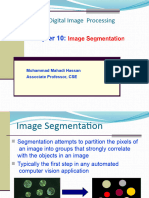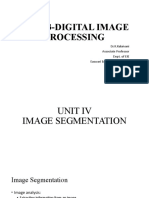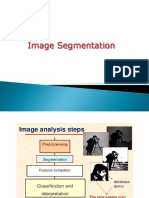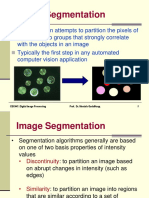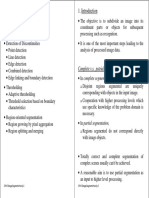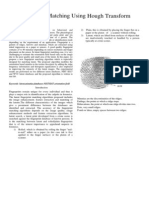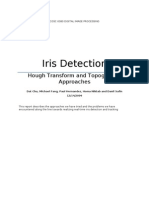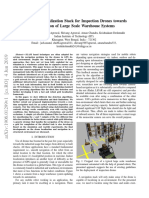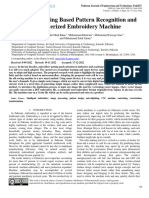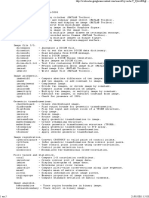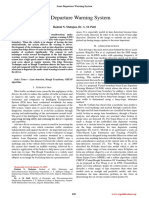0% found this document useful (0 votes)
29 views58 pagesChapter 10 Image Segmentation
The document discusses image segmentation, which partitions image pixels into groups that correlate with objects, serving as the first step in computer vision applications. It covers various segmentation techniques based on intensity properties, including discontinuity and similarity, as well as methods for edge, line, and point detection. Additionally, it addresses thresholding methods, including P-tile and adaptive thresholding, which are crucial for effective segmentation.
Uploaded by
sayantand875Copyright
© © All Rights Reserved
We take content rights seriously. If you suspect this is your content, claim it here.
Available Formats
Download as PDF, TXT or read online on Scribd
0% found this document useful (0 votes)
29 views58 pagesChapter 10 Image Segmentation
The document discusses image segmentation, which partitions image pixels into groups that correlate with objects, serving as the first step in computer vision applications. It covers various segmentation techniques based on intensity properties, including discontinuity and similarity, as well as methods for edge, line, and point detection. Additionally, it addresses thresholding methods, including P-tile and adaptive thresholding, which are crucial for effective segmentation.
Uploaded by
sayantand875Copyright
© © All Rights Reserved
We take content rights seriously. If you suspect this is your content, claim it here.
Available Formats
Download as PDF, TXT or read online on Scribd
/ 58


